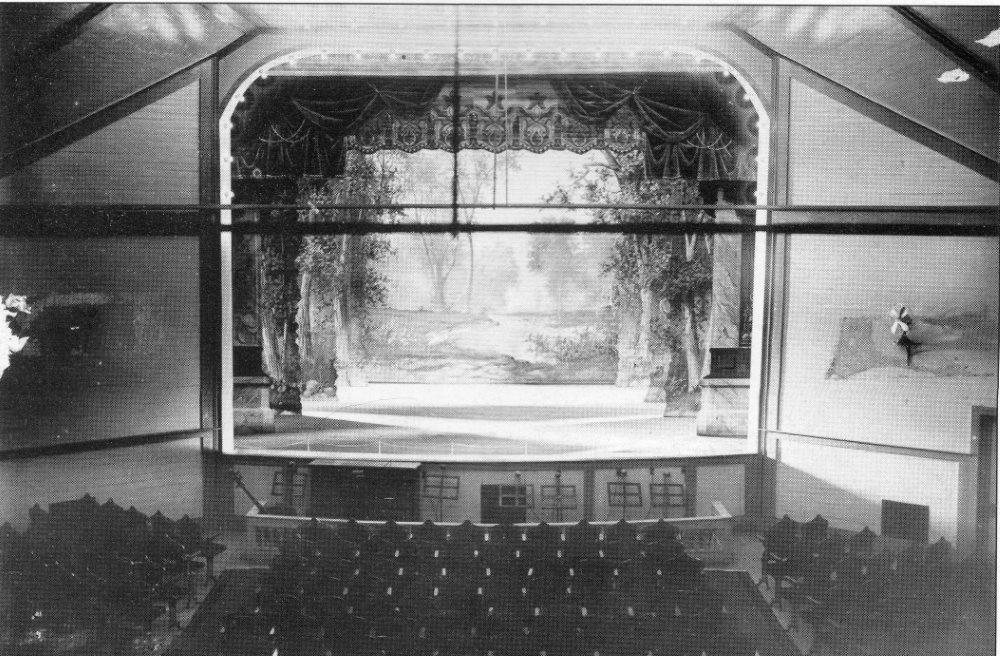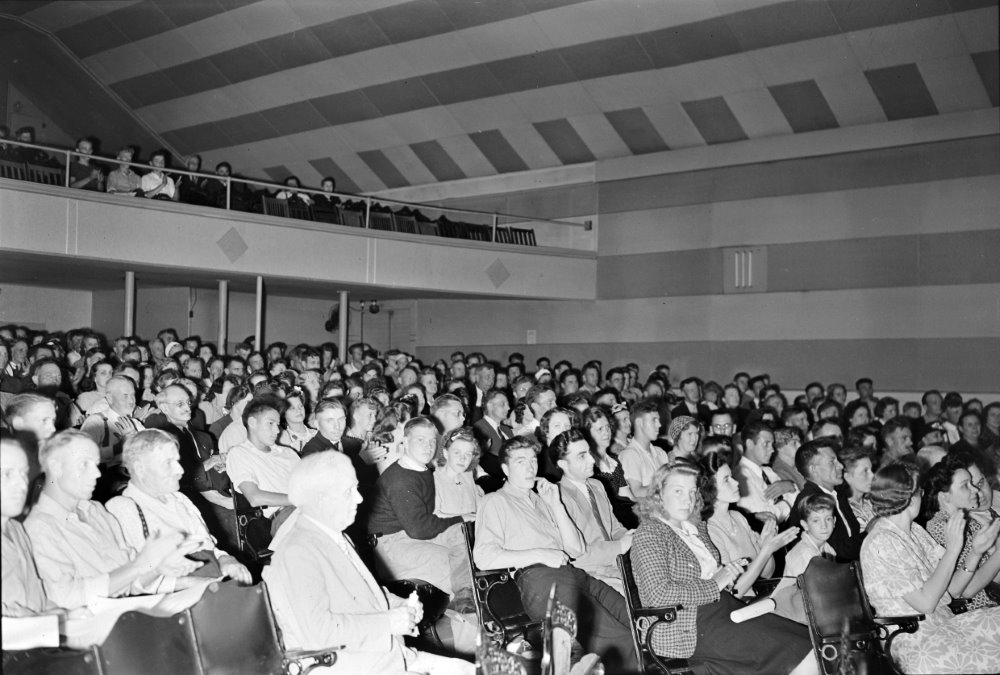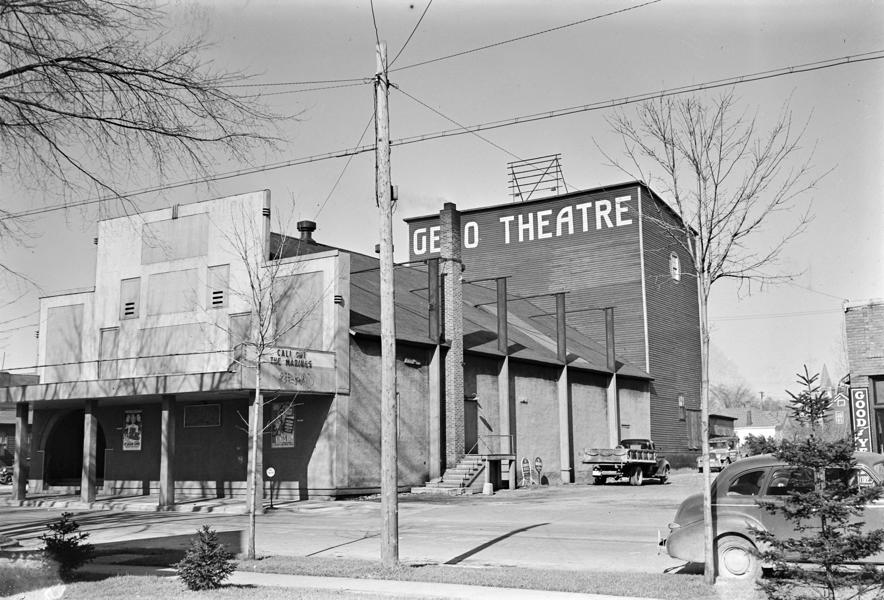
The interior of the Gero Theatre when it was still an opera house. SCHS Photo
During the early twentieth century, professional theatre companies toured the country via the railroad, and would stop in Manistique for a week’s engagement at the Gero Theatre. One railroad car housed the cast and crew, while two additional cars carried the actor’s costumes along with the company’s baggage and equipment. Livery workers and draymen had to haul as many as 60 trunks from the Soo Line depot to the theatre building.
A great lover of the theatre, Benjamin Gero purchased the Manistique Opera House, located on South Maple Street, in 1904 and redesigned the building to enhance live theatrical performances. He slanted the floor of the opera house toward the stage and installed permanent seating. A 70-foot tower behind the stage allowed scenery backdrops to be raised and lowered with a system of ropes and pulleys. An elevator made it easier for trunks and other theatre equipment to be transported to the second and third floors. In addition, the name of the opera house was changed to the “Gero Theatre.”
Touring professional thespian groups such as the Yankee Doodle Stock Company performed different plays each day at prices that small town audiences could afford. Plays included both comic operas and dramas. Specialty performers entertained audiences during the intermission between acts.
Local “home talent” shows were also hugely popular forms of entertainment in the early 1900’s. William Kefauver, who had a strong baritone voice, was a frequent organizer and performer in these productions. Several ambitious Gilbert and Sullivan operettas were successfully produced and performed by Manistique singers and actors. Music and singing were much more a part of social gatherings than is so today. Helen Kefauver recalled years later her dad singing and playing the piano in the parlor of their home. “When friends would come in the evening, the entertainment usually centered in the parlor around the piano. Many times, I went to bed hearing them singing and playing downstairs. Radio and television stopped all that, of course.”

An audience at the Gero Theatre circa 1941. Photo courtesy Vern Linderoth Collection.
Manistique churches sponsored performances at the Gero Theatre which involved nearly the entire community. In April of 1909, the Methodist Episcopal Church put on the sacred cantata, David, The Shepherd Boy. Assisting in the performance were many of the most talented musicians in the city. The production included both a children’s chorus and a men’s chorus of 100 members each.
Benjamin Gero Jr. took over the management of the Gero Theatre from his father in 1916. He converted the theatre to feature motion pictures, to compete with the Princess Theatre on Cedar Street, which had been showing silent films since 1907. The Gero began playing silent movies in September of 1916. But the new movie house soon ran afoul of the First Baptist Church in Manistique. It was noted that the Gero Theatre was playing motion picture shows on Sundays, which the Baptists claimed hindered the work of the church. It was also a violation of a city ordinance. Pressure from the church coerced city officials to enforce the law that was on the books. Movies on Sunday were suppressed.
Talking movies were introduced at the Gero in 1929. The zenith of live entertainment at the Gero Theater took place on July 26, 1941 during Manistique’s annual blueberry festival. The wildly popular WLS Barn Dance was broadcast “by wire” from the Gero Theatre. The show was beamed across the county via the 50,000 watt clear channel signal of radio station WLS in Chicago, and by NBC affiliates nationwide.

The Gero Theater in Manistique circa 1940 showing the scenery loft. Photo courtesy Vern Linderoth Collection.
J. L. LeDuc purchased the business in 1942 and changed the name to the Oak Theater. During the summer of 1952, the top portion of the 70-foot scenery loft at the rear of the building was removed. It was deemed a relic of the past and a potential safety hazard during high winds. After providing Manistique residents with lively entertainment for nearly 70 years, the Oak Theater closed its doors to the public for the final time in November of 1970.
See our “About Us” page to learn about the historical society’s New Museum Fund Drive.
